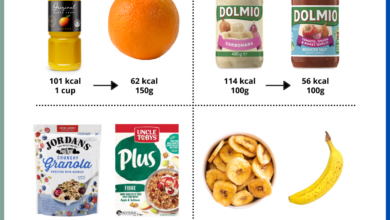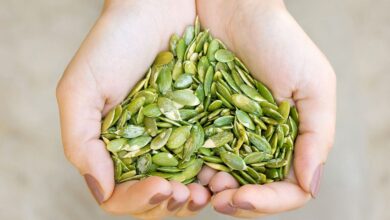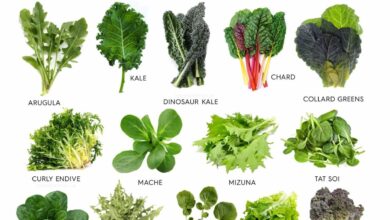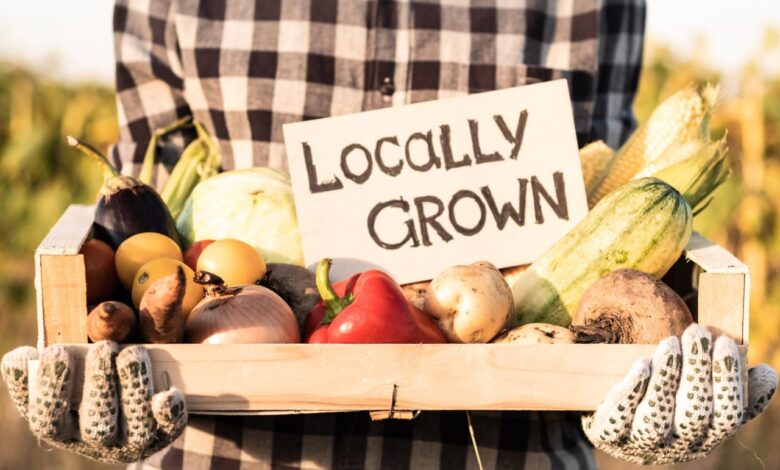
Organic Produce vs. Local: Whats Healthier?
Organic produce versus local whats healthier – Organic produce versus local: what’s healthier? This question is often debated, with passionate arguments on both sides. While organic produce is known for its pesticide-free status and potential health benefits, locally grown food boasts environmental and economic advantages. But when it comes to making the best choice for your health, it’s not always a simple answer.
In this post, we’ll delve into the complexities of organic versus local produce, exploring their nutritional content, environmental impact, accessibility, and cost. We’ll also consider the factors that contribute to a healthier diet, beyond the organic or local aspect, and provide recommendations for incorporating both into your meal plan.
Understanding Organic Produce
Organic produce is a growing trend in the food industry, with consumers increasingly seeking healthier and more sustainable food options. This article delves into the definition, production methods, environmental benefits, and potential health benefits associated with organic produce.
Definition and Production Methods
Organic produce refers to fruits, vegetables, and other agricultural products that are grown without the use of synthetic pesticides, herbicides, fertilizers, or genetically modified organisms (GMOs). Organic farming practices prioritize natural methods to enhance soil fertility, control pests, and prevent diseases.
- Composting and Manure Application:Organic farmers rely on natural sources like compost and manure to enrich the soil with nutrients, promoting healthy plant growth.
- Crop Rotation:This practice involves rotating different crops in a field each year, helping to break disease cycles and improve soil health.
- Biological Pest Control:Organic farmers utilize natural predators, parasites, and disease-causing organisms to control pests instead of synthetic pesticides.
- Weed Management:Organic weed control methods include hand weeding, mulching, and using natural herbicides derived from plants.
Environmental Benefits of Organic Farming
Organic farming practices contribute to a healthier environment by minimizing the use of synthetic chemicals and promoting biodiversity.
- Reduced Pesticide Contamination:Organic farming eliminates the use of synthetic pesticides, reducing the risk of soil, water, and air pollution.
- Improved Soil Health:Organic farming practices enhance soil fertility and structure, promoting healthy microbial activity and reducing erosion.
- Biodiversity Conservation:Organic farming supports a wider variety of plant and animal life, contributing to a more balanced ecosystem.
- Reduced Greenhouse Gas Emissions:Organic farming practices, such as composting and crop rotation, can help sequester carbon in the soil, reducing greenhouse gas emissions.
Potential Health Benefits of Organic Produce
While more research is needed to fully understand the health implications of organic produce, some studies suggest potential benefits for consumers.
The debate about organic versus local produce is always interesting. Some argue that organic is the healthiest choice, while others believe that local, even if not organic, is better for the environment. It’s all about finding the right balance for you, and sometimes a change of scenery can help you discover what that is.
Take, for example, Charlotte, who completely revamped her diet after a vacation, and as a result, she lost half her body weight, a story you can read about here. Maybe her experience will inspire you to make some healthy changes, and perhaps even try some new local produce while you’re at it!
- Lower Pesticide Residues:Organic produce generally contains lower levels of pesticide residues compared to conventionally grown produce.
- Higher Levels of Nutrients:Some studies indicate that organic produce may contain higher levels of certain nutrients, such as antioxidants and vitamins.
- Reduced Risk of Allergies:Some evidence suggests that consuming organic produce may reduce the risk of developing allergies in children.
Organic Certification Labels
To ensure that produce meets organic standards, independent certification bodies inspect farms and processing facilities.
- USDA Organic:The USDA Organic seal is a widely recognized certification label in the United States, indicating that products meet specific organic standards.
- EU Organic:The EU Organic logo is a similar certification label used in the European Union, ensuring that products meet EU organic regulations.
- Other Certification Bodies:Various other organizations, such as the Organic Trade Association (OTA) and the California Certified Organic Farmers (CCOF), offer organic certification programs.
Exploring Local Produce: Organic Produce Versus Local Whats Healthier
When considering the origins of our food, the term “local” often arises. But what exactly does it mean, and why is it gaining such popularity? Local produce refers to fruits, vegetables, and other agricultural products grown within a relatively close geographic proximity to where they are consumed.
This proximity minimizes the distance traveled by food, impacting its freshness, environmental footprint, and even the economic landscape of a community.
Environmental Benefits of Local Sourcing
The environmental benefits of sourcing food locally are undeniable. Locally grown produce has a significantly lower carbon footprint compared to food transported over long distances. This is due to reduced fuel consumption and greenhouse gas emissions associated with transportation.
The age-old debate of organic versus local produce often boils down to personal preference and access. While organic might seem healthier, local produce often boasts lower transportation costs and supports local farmers. Regardless of your stance, boosting your vegetable intake is key.
Check out 5 ways to up your vegetable game for some creative ideas! Ultimately, the healthiest choice is the one that fits your lifestyle and ensures you’re getting a variety of nutrients. So, whether you choose organic or local, make sure you’re enjoying a rainbow of colors on your plate!
- By reducing the need for long-distance transportation, local food systems contribute to a decrease in air pollution and carbon emissions, mitigating the effects of climate change.
- Local food systems often emphasize sustainable farming practices, such as reduced use of pesticides and fertilizers, which further minimize environmental impact.
- Supporting local farmers can also encourage the preservation of agricultural land, preventing the conversion of farmland to urban development.
Economic Impact of Supporting Local Farmers, Organic produce versus local whats healthier
The economic impact of supporting local farmers extends beyond the individual consumer. By choosing locally grown produce, consumers directly contribute to the economic vitality of their communities.
- When you buy local, you’re supporting local businesses and creating jobs within your region.
- Local farmers often invest their earnings back into their communities, strengthening the local economy.
- The money spent on local produce circulates within the community, creating a positive economic ripple effect.
Potential Health Benefits of Consuming Locally Grown Produce
While the health benefits of consuming fresh produce are widely acknowledged, locally grown produce may offer additional advantages.
- Local produce is often harvested at peak ripeness, resulting in a higher concentration of nutrients and flavor.
- The shorter time between harvest and consumption minimizes the loss of nutrients and vitamins, ensuring maximum nutritional value.
- Local farmers are more likely to use sustainable farming practices, reducing exposure to pesticides and herbicides, potentially leading to a healthier food supply.
Nutritional Comparison
While the debate on organic vs. local produce often centers around environmental and ethical considerations, the nutritional value of each remains a key factor for health-conscious consumers. This section explores the similarities and differences in the nutritional content of organic and local produce, considering the potential impact of pesticide residues on non-organic options.
Pesticide Residues and Nutritional Value
Pesticide residues, commonly found on conventionally grown produce, can potentially affect the nutritional value of fruits and vegetables. Studies suggest that certain pesticides can interfere with the absorption and utilization of essential nutrients by the body. However, it’s crucial to note that the levels of pesticide residues on produce generally fall within safe limits set by regulatory agencies.
Nutritional Content Comparison
While the overall nutritional value of both organic and local produce is generally similar, there can be subtle variations depending on the specific type of produce and its growing conditions.
The age-old debate of organic vs. local produce often boils down to personal preference. While organic emphasizes pesticide-free growing, local focuses on reducing transportation impact. But for a truly vibrant Thanksgiving table, consider the visual impact! Check out these 5 ways to fill your Thanksgiving table with color for a feast that’s as delicious as it is beautiful.
Ultimately, the healthiest choice is the one that fits your lifestyle and values, whether it’s a vibrant mix of organic and local, or a beautiful blend of colors from your own garden.
Examples of Nutritional Profiles
- Tomatoes:Organic tomatoes tend to have higher levels of lycopene, an antioxidant linked to heart health and cancer prevention. Local tomatoes, especially those grown in sunny climates, may have higher vitamin C content.
- Spinach:Organic spinach may contain higher levels of folate, an essential nutrient for cell growth and development. Local spinach, grown in cooler climates, may have higher levels of vitamin K, important for blood clotting.
- Apples:Organic apples may have higher levels of antioxidants, such as quercetin, known for its anti-inflammatory properties. Local apples, depending on the variety, may have higher levels of fiber and vitamin C.
Average Nutritional Content Comparison
| Produce | Organic (Average) | Local (Average) |
|---|---|---|
| Tomatoes (100g) | Lycopene: 10mg, Vitamin C: 15mg | Lycopene: 8mg, Vitamin C: 20mg |
| Spinach (100g) | Folate: 150mcg, Vitamin K: 100mcg | Folate: 130mcg, Vitamin K: 120mcg |
| Apples (100g) | Quercetin: 5mg, Fiber: 4g | Quercetin: 4mg, Fiber: 5g |
Environmental Considerations
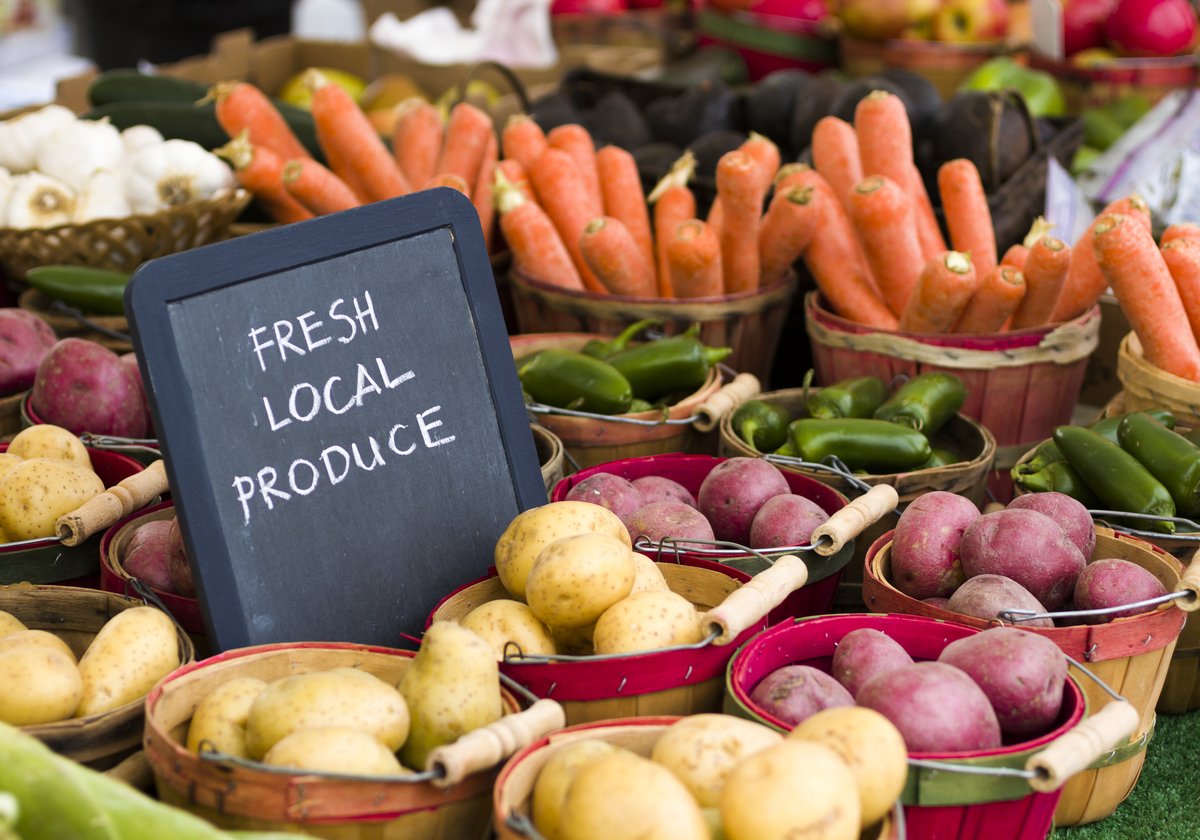
When choosing between organic and local produce, it’s essential to consider the environmental impact of each production method. Both approaches have their own advantages and drawbacks in terms of sustainability.
Transportation Distance and Carbon Footprint
The distance produce travels from farm to table significantly impacts its carbon footprint. Transportation accounts for a considerable portion of the overall environmental impact of food production.
- Local produce, grown within a relatively short distance from consumers, has a lower carbon footprint due to reduced transportation requirements. This minimizes fuel consumption and greenhouse gas emissions associated with shipping.
- Organic produce, while often grown using sustainable methods, can sometimes travel longer distances to reach consumers. This can result in a higher carbon footprint, especially if it is imported from other countries.
It’s important to note that local production does not always guarantee a lower carbon footprint. Factors like transportation mode (truck vs. rail) and packaging materials also play a role.
Impact on Soil Health and Biodiversity
Organic farming practices prioritize soil health and biodiversity.
- Organic farmersavoid the use of synthetic fertilizers and pesticides, which can degrade soil quality and harm beneficial insects and microorganisms. They rely on natural methods like crop rotation, cover cropping, and composting to improve soil fertility and structure.
- Conventional farming, on the other hand, often relies on synthetic inputs that can have negative impacts on soil health and biodiversity. Pesticides can kill beneficial insects and disrupt ecological balance, while excessive fertilizer use can lead to nutrient runoff and water pollution.
Organic farming practices contribute to a more sustainable agricultural system by promoting healthy soils, supporting biodiversity, and reducing environmental pollution.
Benefits and Drawbacks of Local Farming
Local farming practices offer several environmental benefits, but they also have potential drawbacks.
- Benefits:
- Reduced transportation distances, lowering carbon emissions.
- Support for local economies and communities.
- Potential for increased food security and resilience.
- Drawbacks:
- Limited availability of certain crops due to climate and seasonality.
- Potential for higher prices due to smaller-scale production and limited supply.
- Increased reliance on local weather conditions, which can affect yields and prices.
Accessibility and Cost
The accessibility and cost of organic and local produce are crucial factors influencing consumer choices. While organic produce often promises health and environmental benefits, it frequently comes at a higher price. Local produce, on the other hand, can offer both affordability and freshness, but availability may be limited by seasonality.
Availability and Cost in Different Regions
The availability and cost of organic and local produce vary significantly across different regions. Factors like population density, agricultural infrastructure, and consumer demand play a significant role. For instance, urban areas with a high concentration of health-conscious consumers may have greater access to both organic and local options, but prices might be higher due to transportation costs and higher demand.
Conversely, rural areas with limited access to supermarkets and farmers’ markets might find it challenging to obtain both types of produce, particularly organic options.
Factors Influencing the Price of Organic Produce
The higher price of organic produce is often attributed to several factors:
- Production Costs:Organic farming practices typically involve higher labor costs due to manual weed control and pest management, as well as the use of certified organic inputs, which are often more expensive than conventional alternatives.
- Demand:The growing demand for organic produce has driven up prices, as consumers are willing to pay a premium for products perceived as healthier and more sustainable. This increased demand also contributes to the limited supply, further impacting prices.
- Certification Costs:Organic certification involves rigorous inspections and audits to ensure compliance with strict regulations, adding to the overall cost of production.
- Transportation Costs:Organic produce may need to be transported over longer distances to reach consumers, as organic farms are often smaller and less concentrated than conventional farms.
Seasonal Availability and Local Markets
Seasonal availability is a key factor influencing the accessibility of local produce. Local farmers’ markets and community-supported agriculture (CSA) programs offer a direct connection to local farmers, providing access to fresh, in-season produce at competitive prices. However, the availability of specific items is limited to the growing season, requiring consumers to adapt their dietary choices accordingly.
Strategies for Making Organic and Local Produce More Accessible
Several strategies can be implemented to make organic and local produce more accessible to a wider range of consumers:
- Government Support:Policies promoting organic farming and supporting local food systems can help lower production costs and increase supply, making organic and local produce more affordable.
- Community Initiatives:Community gardens, food banks, and food co-ops can provide access to affordable, locally grown produce, particularly for low-income communities.
- Education and Awareness:Raising awareness about the benefits of organic and local produce can encourage consumer demand, leading to increased supply and potentially lower prices.
- Supporting Local Farmers:Purchasing produce directly from local farmers at farmers’ markets or through CSAs can help support local agriculture and contribute to a more sustainable food system.
Healthier Choices
Choosing between organic and local produce can be a dilemma, but it’s important to remember that both options contribute to a healthier diet in unique ways. Organic produce offers reduced exposure to pesticides and synthetic fertilizers, while local produce minimizes the environmental impact of transportation and supports local farmers.
Benefits of Organic and Local Produce
The health benefits of organic and local produce are interconnected, creating a synergistic effect on our well-being. Organic produce is grown without synthetic pesticides and fertilizers, which can potentially reduce exposure to harmful chemicals. While the long-term effects of pesticide residues on human health are still being studied, some research suggests a link between pesticide exposure and certain health issues.
Local produce, on the other hand, often boasts a higher nutritional value due to reduced transportation time and minimal storage, leading to fresher and more nutrient-rich produce.
Factors Beyond Organic and Local
Beyond the organic and local aspects, a healthy diet is multifaceted. It’s crucial to consider the diversity of fruits and vegetables consumed, as each offers unique vitamins, minerals, and antioxidants. The overall dietary pattern is equally important, with a balanced intake of carbohydrates, proteins, and healthy fats crucial for overall health.
Furthermore, cooking methods can significantly impact nutrient retention. Steaming, grilling, and roasting are preferred over frying or boiling, which can destroy valuable nutrients.
Incorporating Organic and Local Produce
To incorporate organic and local produce into a balanced diet, prioritize seasonal produce, as it’s often more affordable and readily available. Local farmers’ markets are excellent sources for fresh, seasonal produce, often with organic options. For budget-conscious consumers, consider purchasing organic produce in bulk, as it can be more cost-effective.
Plan meals around seasonal produce, using it in salads, soups, stews, and smoothies. Consider incorporating local produce into your pantry staples, such as dried beans, lentils, and grains.
Sample Weekly Meal Plan
Here’s a sample weekly meal plan that incorporates both organic and local produce:
- Monday:Grilled salmon with roasted organic broccoli and quinoa salad with local tomatoes and cucumbers.
- Tuesday:Lentil soup with local carrots, celery, and onions, served with whole-grain bread.
- Wednesday:Chicken stir-fry with organic bell peppers, broccoli, and local mushrooms, served with brown rice.
- Thursday:Quinoa salad with local spinach, organic strawberries, and almonds.
- Friday:Vegetarian chili with organic beans, corn, and local tomatoes.
- Saturday:Homemade pizza with local mozzarella cheese and organic vegetables.
- Sunday:Breakfast burrito with local eggs, organic avocado, and black beans.
Ending Remarks
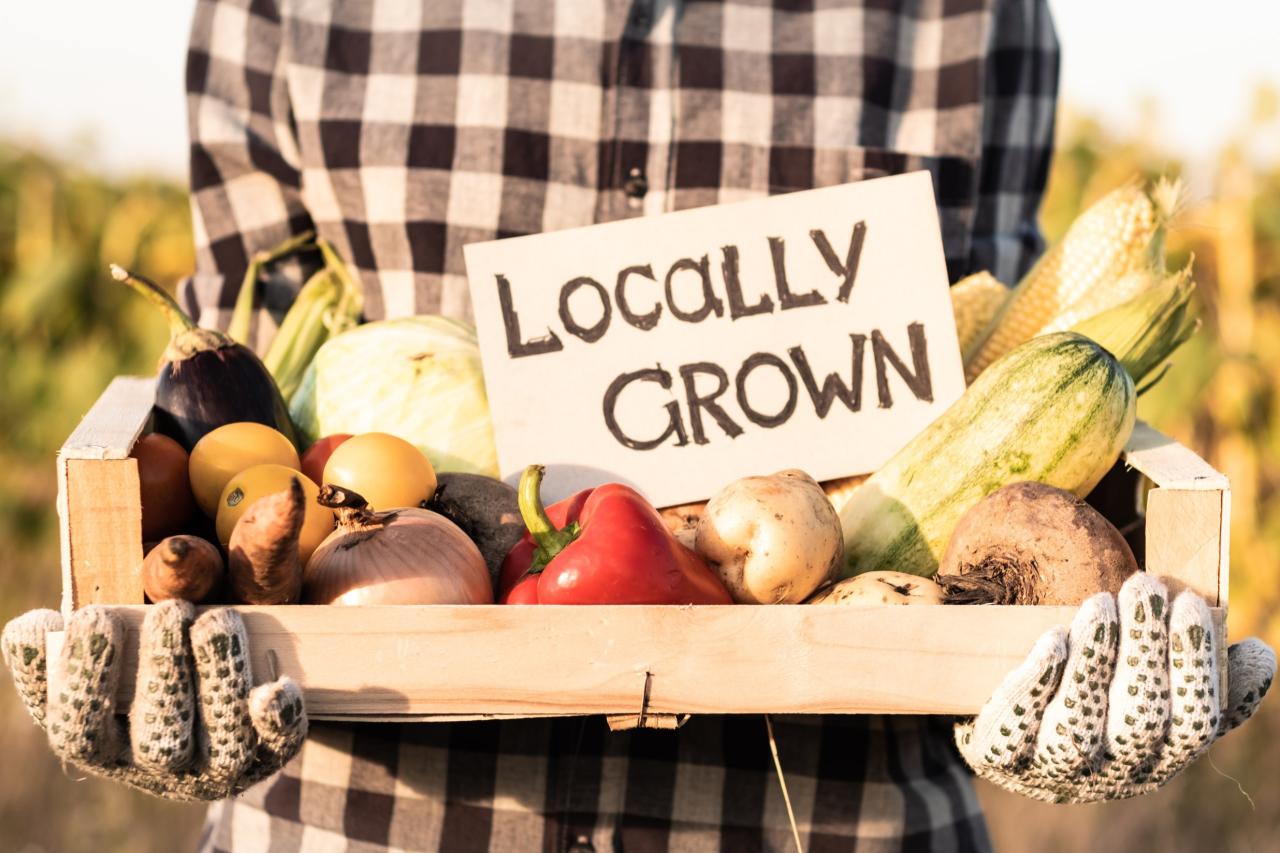
Ultimately, the healthiest choice depends on your individual priorities and circumstances. If minimizing pesticide exposure is your top concern, organic produce may be the way to go. However, if you value supporting local farmers and reducing your carbon footprint, local produce might be the better option.
And, of course, incorporating both into your diet can provide a well-rounded and healthy approach.

